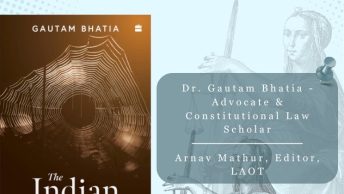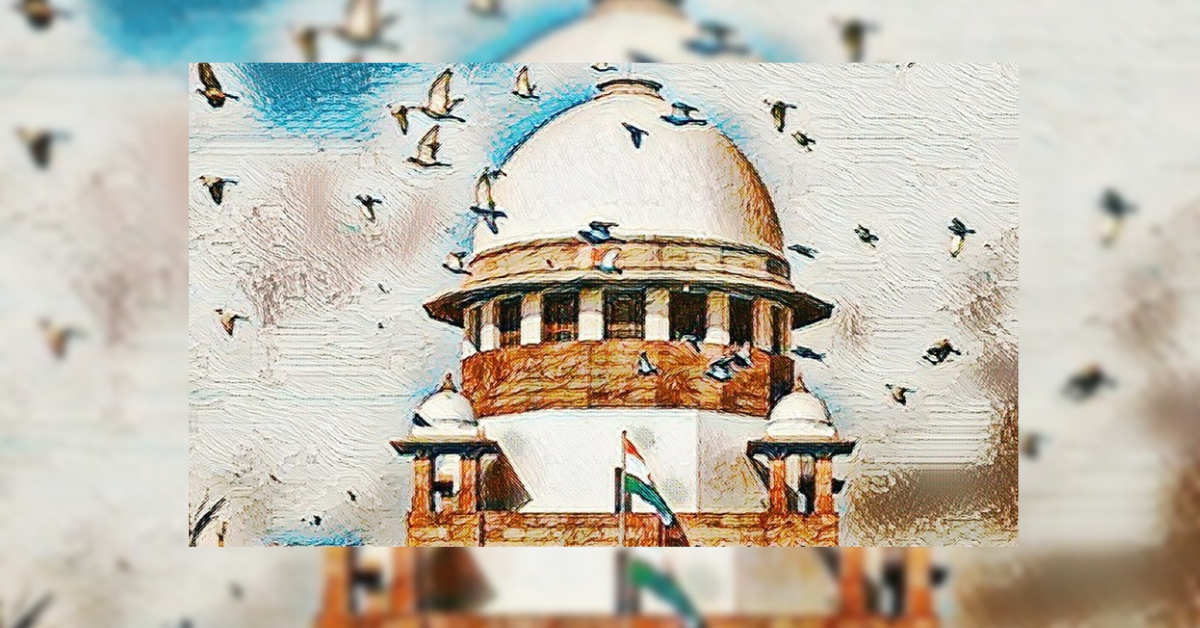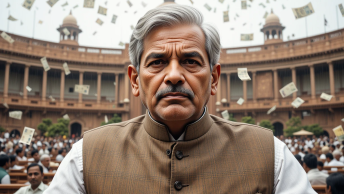In the OBC reservation debate, a key issue – and a more serious issue – which took a backseat is the imposition of caste based quotas in private educational institutions. The 93rd Constitutional Amendment introduced a new clause in the Constitution (Article 15(5)) enabling the State to make a special provision for advancement of socially and educationally backward classes in private educational institutions, irrespective of whether they receive aid from the state. It has an express exemption for minority-run-educational-institutions. In effect, this Amendment enables the State to impose caste based quotas in unaided private educational institutions. This Amendment is subversive of some of the most basic liberties in this country. The fact that it did not generate a strong debate in Parliament and in the media is indicative of extent of political correctness in public discourse. Thankfully, we have a Constitution where “liberty” is not a dirty word, something to be sacrificed at the altar of “equality”. After the Supreme Court’s ruling in Keshavanada Bharti (1973) – India’s unique contribution to field of Constitutional Law – any constitutional amendment which negates the basic structure of the Constitution is unconstitutional and does not have any effect. The 93rd Amendment violates the basic structure of the Indian Constitution in a four-fold manner.
First and foremost, this Amendment destroys the very essence of academic freedom. Although not expressly enumerated in the Indian Constitution, academic freedom – like the right to free press – is a special concern of the constitutionally guaranteed right to free speech and expression (Article 19(1)(a)). The right to free speech and expression is an integral part of a democratic set up and is part of the basic structure of the Constitution. Any constitutional amendment which negates the very essence of the constitutional right of free speech and expression is liable to be struck down as unconstitutional.
What constitutes academic freedom? The eminent judge, Justice Felix Frankfurter of the American Supreme Court gave a cogent working definition by outlining the “four essential freedoms” that should constitute academic freedom. He said academic freedom entails the right of a university to “determine for itself on academic grounds who may teach, what may be taught, how it shall be taught, and who may be admitted to study.'” (Sweezy (1957)) The 93rd Amendment enables the State, instead of the concerned educational institution, to determine “who may be admitted to study”. The State is going to decide the criterion for admission. If this Amendment is upheld, the State could then be empowered, by a constitutional amendment, to decide who may teach, what may be taught and how it should be taught in private institutions. While nationalization of economic activity may be constitutionally permissible (even though economically indefensible), nationalization of educational process is not only constitutionally impermissible, but marks the end of democracy. The eminent educationist and former President Dr. Sarvepalli Radhakrishnan in his report on University Education in 1956 poignantly observed – “We must resist, in the interests of our own democracy, the trend towards governmental domination of the educational process.” Chief Justice Kirpal, speaking for a bench of eleven judges in T.M.A. Pai (2002), made the same point when he spoke about the right of private educational institutions to “pursue intellectual excellence and being free from governmental controls.” The 93rd Amendment suffocates the constitutionally protected freedom of academic institutions by trying to control their admission process.
Second, the 93rd Amendment violates the essence of the equality clause in the Constitution. The Supreme Court in a number of cases right from Keshavananda Bharati decision in 1973 to the Indra Sawhney-II decision in 2000 has affirmed that equality is part of the basic structure of the Constitution. If the stated theme of the 93rd Amendment was to impose the obligation of social justice on private unaided educational institutions, there is no justification for excluding it when it comes to minority unaided educational institutions. The irrelevance of the objective of giving preferential treatment comes out in sharp contrast when it comes to professional education, which has little nexus with the minority status. Why should a Christian or a Muslim professional educational college be exempt from admitting students from a backward class into engineering or a medical course when the same obligation is imposed on other colleges? If the objective of the government was to preserve the minority character of these institutions, the Amendment could have obligated these institutions to admit students from the respective minority communities. Secularism mandates that State cannot use religion as a basis for either imposing a duty or denying a benefit. The 93rd Constitution Amendment uses religion as the basis for discriminating against non-minority educational institutions and minority students. At a practical level, this Amendment would encourage “institutional conversion” whereby non-minority institutions would try to get members from the minority community on board and designate themselves as a minority institution to escape from the affirmative action obligation. This has happened in the past – the most glaring example being Ramakrishna Math claiming to be a minority institution! Our constitution makers conceptualized minority rights to be anti-discriminatory provisions. The 93rd Amendment turns this upside down by making it a charter for reverse discrimination. This is a violation of Equality and Secularism which form part of the Basic Structure of our Constitution.
Third, the 93rd Amendment destroys the very essence of liberty – the right to be let alone. Every individual has the right to pursue his own interests as long as he is not causing any harm to the public. The Indian Constitution does recognize this conceptualization in Article 19 which gives the citizen five valuable liberties (freedom to speak and express, move, associate, assemble and the right to practice trade, occupation or business). The Constitution does enable the State to impose restrictions on these invaluable rights, but they have to be “reasonable”. The Constitution even identifies the grounds on which these “reasonable restrictions” can be imposed. (Articles 19(2) to 19(6)) Very few constitutions have used such an approach to protect liberty. The message is unequivocal – one cannot trust law makers when it comes to the protection of our basic liberties. This carefully erected balance – between liberty and public interest, between liberty and responsibility, and between liberty and equality – forms part of the basic structure of the Indian Constitution.
The 93rd Amendment upsets this carefully erected balance by ostensibly trying put equality over liberty. A bench of seven judges of the Supreme Court in Inamdar held that caste based quotas in private institutions would amount to an unreasonable restriction on the right of private educational institutions to run the institution. The 93rd Amendment tries to overrule this Supreme Court ruling by enabling the State to impose unreasonable restrictions on the right of individuals to run an educational institution and in the process upsets carefully erected balance created by the Constitution in Article 19. As Justice Lahoti pointed out in the Inamdar case, state regulation of admissions would amount to “nationalization of seats” which cannot be a “reasonable restriction”. If the 93rd Amendment is upheld, it will create a wrong precedent. There will be no constitutional constraint in the future to stop the government from imposing an unreasonable restriction on the other liberties. Equality alone cannot be a valid justification for narrowing the scope of an already truncated liberty clause. While it’s true that liberty without equality would lead to anarchy, it’s also equally true that equality without liberty would lead to tyranny. By enabling the State to impose unreasonable restrictions on liberty, the 93rd Amendment sounds a death-knell for the liberty clause in the Constitution which is part of the basic structure of the Constitution. The 93rd Amendment validates an old maxim – our liberties are in great danger when the legislature is in session.
Fourth, the 93rd Amendment also violates the right to free speech and expression by compelling institutions to endorse caste as a criterion for admission. An educational institution that intends to run the institution for the benefit of backward sections of the society, but does not intend to use caste as a criterion for admission, will now be compelled to endorse caste since the government identifies “backward classes” primarily based on caste. The educational institution is precluded from designing its own social justice mechanism and is compelled to adopt a selection process which will entail an enquiry into the caste of the applicant. Even if the institution is against caste, the Amendment leaves it with no option but to admit students on the basis of caste. Compelling private educational institutions to use caste as a criterion amounts to “compelled speech” and this goes against the freedom of expression since right to express also includes within its ambit right not to express.
Further, caste is a prohibited criterion under the Indian Constitution for identifying backward class and by a convoluted interpretation, it became a permissible criterion. Even if it is permissible for the government to use caste in the admission process in state institutions and in the hiring process for state employment, thrusting it on private institutions violates the core of the liberty clause in the Constitution.
The pernicious effect of this Amendment can be illustrated by two real life examples. The truck drivers in the State of Tamil Nadu raised funds and constructed an engineering college to increase the educational opportunities for their children. Similarly a NRI constructed a college in Maharashtra with the sole objective of advancing the interests of Scheduled Tribe students. Nothing in the Constitution should stop these educational institutions from admitting students to serve their objective since they are not relying on the State for support. Not so under the 93rd Amendment. The State is now going to decide the admission policy and the institutions have no option but to comply. The 93rd Amendment creates a command and control mechanism in higher education.
The Amendment is now before the Supreme Court and the Basic Structure Doctrine amply equips the Court to strike down this Amendment. The Basic Structure Doctrine was intended to be used in the rare case when the core values enshrined in the Indian Constitution are under threat. The 93rd Amendment attacks the core values of Liberty and Equality in the Indian Constitution and I hope the Court strikes it down.
UPDATE
The Comments section makes an interesting point about severability – once the exemption for minority institutions is taken out, Article 15(5) can still stand on its own. This argument is inconsistent with established constitutional jurisprudence on severing the unconstitutional part from the constitutional part. (See the classic judgment of Justice Venkatram Ayyar in 1955 in RMDC case which outlines the principles of severability). The essence of these principles can be summarized as follows:
For a legislation to be severed, it has to satisfy two conditions
First, the constitutional part must be able to stand on its own, after the unconstitutional part has been severed.
Second, the Court in the process of severing the legislation cannot go against the intention of the Parliament.
In the case of 15(5), the first test is satisfied. Article 15(5) can stand on its own after removing the exemption. But severing the exemption for minority institutions would violate the second test. The effect of severing the exemption is that state will now be empowered to impose caste based quotas in minority institutions. This goes against the express intention of Parliament not to impose the obligation of affirmative action on minority institutions.
Therefore, the entire Article 15(5) has to sink once the Court comes to the conclusion that the exemption violates Secularism and Equality.







Some other writings that I came across which also discuss the same issue:
http://www.lawstudent.in/bc_seervai_essay.htm
http://economictimes.indiatimes.com/Opinion/Editorial/Todays_Features/Perspectives/Is_93rd_amendment_constitutionally_tenable/articleshow/msid-1621372,curpg-1.cms
http://www.telegraphindia.com/1060131/asp/opinion/story_5771626.asp
Harsh
I think the author would bear in mind the following two points:
1. Its actually the 93rd Amendment, not the 104th, that inserts the impugned Article 15(5).
2.The minority institution exclusion is only a partial attack. That latter portion of the provision dealing with excluding minorities can be severed by the Court, and if that is done, the provision continues to stand, despite its innumerable other drawbacks.
As long as the caste system itself is not eliminated such outcomes are unavoidable. The irony is that even those of us who hate caste based overtures by the government etc are such an integral part of the caste system in our personal lives. For example the writer’s last name is his caste! We adhere to the caste system in our personal lives (marriage, partnerhsips, people we associate with) but paradoxically despise it when it is in the public sphere. What’s the solution ? I don’t think there is one.
Another way of looking at the Amendment is that it introduces the horizontal application of FRs in to Indian constitutional law (a la Shelley v. Kramer). It allows provisions such as Art. 15(4) [an enabling provision not originally a right, turned into one by years of political and SC gloss] to be enforced against private institutions.
As per Inamdar, private unaided institutions enjoy freedoms nearly as great as minority unaided institutions, except that minority unaided institutions can trace their right to Art. 30(1) rather than Art. 19(1)(g) and thus escape the rigour of Art. 19(6). This may be the reason for leaving out minority unaided institutions from the ambit of Art. 15(5), though vote banks were probably the decisive factor.
A Dalit leader made an interesting point on the ‘dilution of standards’ plea often taken by private institutions against reservations. He pointed out that NRI quotas etc. also lead to admission of sub-standard students but that is never viewed as a dilution of academic excellence. Of course, private institutions should be free to dilute standards as they see fit, but it does expose a hypocritical mindset, one never condemned in any judgment (Inamdar also allows NRI quotas to subsidise poor students).
I believe you have got it in reverse – it was originally the 104th Constitution Amendment bill that passed to become the 93rd Amendment.
I do not see why it would have to be mandatory for private institutions to have to adopt a ‘selection process that entails an inquiry into the caste of the applicant’. Those applicants who choose to reveal their caste status of their own volition may be entitled to benefits for the same; others who choose not to would forfeit the same. The question of ‘compelled speech’ should therefore not arise at all.
Thanks for your comments. The links were very helpful
I have already responded to some of the comments in the Update section of the post.
“Anonymous” asserted that caste is a reality and we should live with it. I differ. Caste as an institution has been losing strength right from early twentieth century. In 1950, upper castes would not have touched food given prepared or served by the lower castes. But today that practice has come down sharply in cities and in towns also. People no longer enquire about the caste of the person when they eat in restaurants. The influence is only going to go down. The only question is the speed with which it is going to be eliminated. Caste based reservations end up strengthening the institution of caste.
“Anonymous” in support of his argument suggested that my last name indicates my caste. I agree, but my first name also indicates my religion. That’s also a reality. Does it mean that government should give reservation on the basis of religion? Names are part of our identities. Surely we cannot call ourselves “Anonymous”!
Our Constitution strongly frowns upon the institution of caste. Dr Ambedkar specifically instituted an Article in the Constitution terminating caste based reservations.
Thanks Mr. Dilip. I did my research and you are right and I was wrong. It is the 93rd Amendment which inserts Article 15(5).
Om compelled speech, my contention is that Amendment compels the educational institution to endorse caste as a criterion for selecting students. I am not saying it is compelled speech for the applicant.
Dear Vivek,
Can you correct the Update section, wherein you continue to mention 19(5) instead of 15(5).
Secondly, Can you give the reference for Ambedkar instituting an Article against caste-based reservations.
Thirdly, I would like you to respond to Rampal’s reservations on the Inamdar, T.M.A.Pai verdicts which seem to have endorsed the NRI quotas, which lack any rationale.
I agree with Vivek Reddy.That article cannot be salavaged.The
confusion over admissions in private institution will persist
unless the court strikes down 15(5). We have two extremes now
and both are not good for higher education.One is control by govt.
through reservations based on caste
and the other is private managements making seats available
at exorbitant costs. The judgment
in Unnikrishnan case tried to strike a balance, however flawed
it was.I think somewhere in Inamadar judgment SC stated that
government failed to do something
the courts had to step in to bring
in regulation. I think govt. should
keep off but crass commercialisation is not the solution. We need to find a solution that balances interests
of stakeholders.
ravi srinivas
Vivek
Really enjoyed your post. A couple of quick question/comments
1) The Constitution in Art.15 (4) does not only refer to caste, it refers to socially and economic backward classes. This seems to imply that the government can certainly reserve seats for any group that is socially and economically backward, including Muslims.
2)Also doesn’t the exclusion of dalit Christians and Muslims, imply that the government does give reservations on basis of religion?
Thanks for your comments. Let me respond to each of them given the constraints of the Comments section.
1. On NRI quotas. I think one needs to understand the context. The Supreme Court in TMA Pai said that while state cannot regulate admissions for unaided colleges, they can regulate fees. The SC said that pvt institutions do not have the right to charge capitation fees, but they have a right to charge a “reasonable surplus”. In Inamdar, the pvt institutions raised the contention that if govt institutions like IIT and IIM have a NRI/foreign students quota where a differential fee is charged, they should also be entitled to admit students and charge a higher to subsidize for infrastructure and poor students. Is this the arrangement constitutional? Yes, the government is entitled to regulate fees in education in the same way they regulate prices for so many services in daily life. Is this arrangement the ideal set up for higher education? No. On higher education, we should replicate the American model which has been a great success as opposed to their primary education model. The private universities (by virtue of constitutional protection) are precluded from any interference by the state. And the state’s role is confined to establishing public universities and giving scholarships. Once you allow the market to kick in, access to education is no longer an issue. In India, education is a sellers market. It like getting a telephone in the eighties. There was a long list. Now once you allowed private players to come in, getting a telephone is one of the most easiest things today. We got to do the same thing with education. Encourage private initiative. This takes care of quality and quantity.
2. On caste based reservations, Article 334 was specifically instituted to end reservation along caste lines. See the CAD debates on that point. The Indian Constitution was quite conscious of caste and used it only where it was necessary. So for example Article 46 obligates the State to improve “educational and economic interests of the weaker sections of the people, and in particular Scheduled Castes and Scheduled Tribes” Whenever the constitution makers made a reference to caste, they made it quite explicit. Equating “backward classes” with backward caste has no basis either in the text of the Constitution or the Constituent Assembly Debates. [This would need an elaborate post]
3. Religious reservation. This is a complex topic and would need a detailed post. Here’s my short take. The problem with Muslim reservation can be traced back to using “caste” to identify backward classes. Once we begin to use caste, the only way we can give reservation for Muslims is finding “caste structures” within the Muslim community also. And that is a difficult exercise since caste structure does not operate in the same way as it does in the Hindu community. Infact several scholars contended that subdividing the Muslim community would amount to division of the community and would go against Islam. A demand has been made that Muslims as a community should be given reservation. That’s straightaway unconstitutional. The Constituent Assembly specifically rejected communal reservation. It violates Secularism and Article 25. It creates a practical problem – if you have reservation for Muslims as a community, nothing is going to stop a non-Muslim to convert to take the benefit of reservation. This is exactly what the Andhra Pradesh government did in 2004 and 2005. They declared the entire Muslim community as a backward class. The AP High Court struck it down on both occasions.
4. What’s the way out? The genesis of the entire problem goes back to caste. Have reservation for backward classes by all means, but do not use Caste as a measure for identifying backward classes. Instead of using caste and religion, use a range of factors to identify backward classes. People who have attended rural schools, people whose parents do not have education or poor education, people who attended government schools or non-English medium schools, people whose annual income is less that a stipulated (I am only using economic criterion as evidence of social and educational backwardness, not economic backwardness). Sociologists can come up a range of other criterion which indicate social and educational backwardness. You can still use caste as a factor, but don’t begin with caste and don’t make it the primary factor. There are three key benefits with this model
First, all religious communities will be entitled to the benefit of reservation.
Second, communities will not have to group themselves around caste lines to get the benefit of reservation.
Third, ensures that the reservation policies are targeted to the right audience.
Fourth, once you have reservation on non-caste factors, it will be difficult for politicians to build vote banks around caste. Caste based reservation is symbolism to a large extent and serves as a proxy for performance.
Vivek, I am not so sure that reservations for Muslims (if Muslims as a group are classified as socially and economically backward) violates Art. 25. Art. 25 only prohibits state intereference in religious pratices right?
The findings of the Sachar committee report suggests that with the exeption of the Scheduled tribes Muslims are socially and economically more backward than any other community and are systematically unrepresented in both public and private sectors.
I am trying to find the relevant A.P High Court Judgement but any insights would be appreciated.